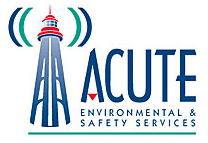Who Needs GHS WHMIS Training – Checklist

Wondering who needs GHS WHMIS training? It might be you! Did you know that there have been changes to Workplace Hazardous Materials Information System (WHMIS)? On June 1st, 2017, suppliers switched from WHMIS to WHMIS 2015, including GHS. What does this mean for employers and workers? This change means that employees must be trained on this new standard.
Want to know more about WHMIS GHS training?
What is GHS?
GHS stands for the Globally Harmonized System of Classification and Labelling of Chemicals. The GHS is a system that classifies the hazards of chemical products. It also communicates the health and safety information found on labels and spreadsheets. The GHS outlines universal rules. The goal of this system is to put rules regarding chemical classification and labeling in place that everyone around the world can adopt.
As of right now, many countries have different systems for labeling and classifying chemicals. Some countries even have multiple systems coexisting. The new standard helps cut the costs for companies who have had to comply with multiple systems. The new standard also makes it much easier for workers to understand and comply with rules that keep them safe from the hazards of various chemicals.
The Benefits of GHS
According to the Canadian Centre for Occupational Health and Safety (CCOHS), the GHS offers many benefits, including:
- Reducing costs
- Promoting regulatory efficiency
- Providing improved and consistent hazard information
- Promoting better emergency response to chemical incidents
- Reducing the need for animal testing
- And More!
Components of GHS and Implementation Dates

Up until May 31, 2017, suppliers (manufacturers and importers) could use WHMIS 1988 or WHMIS 2015. Beginning June 1, 2017, suppliers will change to WHMIS GHS and employees must be trained on the new standard. Between June 1, 2017 – May 31, 2018, distributers and suppliers who import for their own use can continue using WHMIS 1988 or WHMIS 2015 (until May 31, 2018).
With any new system comes changes and amendments. The two key elements of WHMIS GHS are:
- Classification of the hazards of chemicals according to the GHS rules and regulations
- Communication of the hazardous chemicals using both Safety Data Sheets (SDS) and labels
Source: http://www.ccohs.ca/oshanswers/chemicals/ghs.html
Who Needs WHMIS Training?

Now that you know about some of the changes coming to the WHMIS system, it’s important to understand exactly who needs training. If you are exposed to any chemicals or hazardous products in your workplace, you must receive WHMIS training. WHMIS is for all workers, both new and experienced, and aims to educate workers on the chemicals and hazards they may be exposed to.
You may be surprised as to what counts as a chemical hazard. Even common or household chemicals such as bleach can be considered a hazard!
When Will You Need GHS Training?
You will need WHMIS training if:
- You may be exposed to chemicals or a hazardous product during work activities (this includes normal use, maintenance, and emergencies) ✓
- You use, store, handle, or dispose of hazardous products and materials ✓
- You supervise workers who may be exposed to, use, store, handle, or dispose of hazardous products ✓
- You work in emergency response ✓
The list above is not exhaustive – remember that WHMIS training is mandatory for any workers who work with or who may even be potentially exposed to hazardous products in the workplace.
WHMIS 2015 (GHS) Training Course
ACUTE offers a half-day (4 hours) WHMIS 2015 (GHS) training course. ACUTE’s experienced instructors provide a great classroom learning experience with both face-to-face interactions and detailed handouts and quizzes. Training topics included in ACUTE’s WHMIS GHS training course include:
- Explanation of employer, supervisor, and worker responsibilities
- How to recognize, assess, and control risks & evaluate the effectiveness of controls
- How to understand the WHMIS 1988 – 2015 labels
- How to understand the WHMIS 1988 – 2015 pictograms (symbols) and understand the hazards that each symbol represents
- Learn to understand the significance of signal words
- And more!
Ready to begin WHMIS training?
Training With ACUTE
With over 100 years of combined experience, you can be sure to receive quality, hands-on training from knowledgeable and experienced staff. Here are some of the differences when training with ACUTE:
- Open Door Instructor-Student Partnership – ACUTE’s training services emphasize client participation. Our staff
 want to build a relationship with clients and serve as a touchstone for advice anytime moving forward.
want to build a relationship with clients and serve as a touchstone for advice anytime moving forward. - Serving Your Team and Industry – With a vast array of clients in manufacturing, construction, health, academic, and government sectors, ACUTE brings the best safety practices from across the spectrum to your workplace.
- 100 Years Combined Experience – ACUTE provides comprehensive health and safety training, on-site safety services, and consulting services. With over 100 years of combined experience, our company staff offer more than theoretical or abstract ideas. ACUTE offers solutions.
- Track Record of Success – ACUTE is rated 4.9/5 stars on Google reviews, demonstrating a commitment to our clients, quality, and passion for training.
“For over 20 years, Ron Campbell and the professional team at Acute has helped us develop a continuously improving safety program customized to our unique needs in environmental testing and renewable energy services. We are proud of our safety culture and record supported by Acute training services.”
– Hank, Environmental Consulting Company, more testimonials here
Contact us today for quality training in your workplace or on-site at ACUTE’s proven training facilities!
ACUTE is located in Waterloo, Ontario, and services customers from the cities such as Toronto, Mississauga, Brampton, Hamilton, Milton, Kitchener, London, and Guelph, as well as other cities from across Ontario.

